Accepted Scientific Name: Parodia erubescens (Osten) D.R.Hunt
Cactaceae Consensus Init. 4: 6. 1997 [Oct 1997]
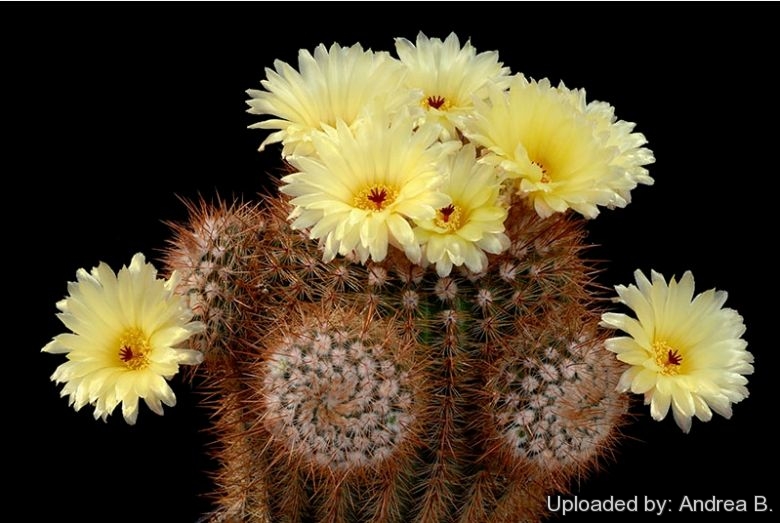
Parodia schlosseri Photo by: Andrea B.
HU491 Garzon, Maldonado, Uruguay. This is a common ball cactus, very easy to cultivate.
Origin and Habitat: Native to Uruguay.
Synonyms:
See all synonyms of Parodia erubescens
back
Accepted name in llifle Database:Parodia erubescens (Osten) D.R.HuntCactaceae Consensus Init. 4: 6. 1997 [Oct 1997]Synonymy: 7
back
Description: Parodia schlosseriSN|20022]]SN|11874]] (Vliet) N.P.Taylor, synonym Parodia erubescensSN|11869]]SN|11869]] (Osten) D.R.Hunt, is a usually solitary spherical to shortly cylindrical, upright cactus. It is related to Parodia mammulosaSN|11874]]SN|20022]] and with its very dense, reddish-spined young growth is an attractive plant, even without the shining lemon-yellow flowers with red stigma.
Derivation of specific name: This member of the Cactaceae family was given this name after the person who collected it in Uruguay, Hugo Schlosser. This plant was for many years known only by its collection number: Schlosser 51.
Stems: Green, solitary, club shaped to short cylindrical, up to about 20 cm high and 12 cm in diameter , with red spines and scanty white wool apically.
Ribs: 22 with chinlike protrusions between areoles.
Areoles: White, later grey.
Central spines: 4, forming a cross, short, stiff, sharp and erect; they are russet to orangish coloured with darker bases, 17-24 mm long
Radial spines: About 34, whiter with yellow bases, thinner, straight, needle-like, spreading against the body of the cactus, to 11 mm long.
Flowers: Shiny lemon-yellow, up to 4,5 long and 5 cm in diameter. Pericarpels with green and red scales, brown wool, and dark bristles. Stigma dark red.
Blooming season: It will usually flower within 3 to 5 years in spring.
Fruits: Many seeded, with thick walls, drying and dehiscing at maturity.
Seeds: Shiny black, tuberculate.
Subspecies, varieties, forms and cultivars of plants belonging to the Parodia erubescens group
Notes: Notocactus schlosseriSN|11873]]SN|11873]], along with N. scopa, N. scopa var. xicoi and N. sucineus, belongs to the N. scopa aggregate, and was transferred to Parodia in 1997 by David Hunt.
Bibliography: Major references and further lectures
1) Urs Eggli, Leonard E. Newton “Etymological Dictionary of Succulent Plant Names” Springer Science & Business Media, 29 June 2013
2) Keith Grantham, Paul Klaassen “The plantfinder's guide to cacti & other succulents” Timber Press, 18 May 1999
3) Edward Anderson “The Cactus family” Timber Press, Incorporated, 2001
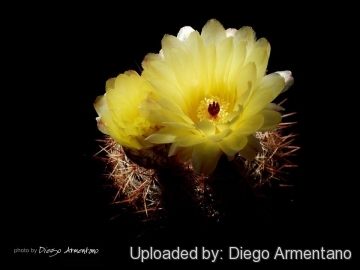 Parodia schlosseri Photo by: Diego Armentano
Parodia schlosseri Photo by: Diego Armentano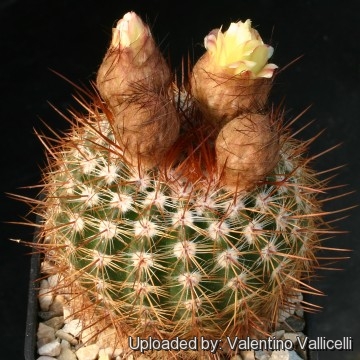 Parodia schlosseri Photo by: Valentino Vallicelli
Parodia schlosseri Photo by: Valentino Vallicelli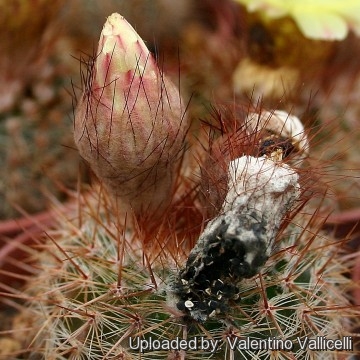 Parodia schlosseri Photo by: Valentino Vallicelli
Parodia schlosseri Photo by: Valentino Vallicelli Parodia schlosseri Photo by: Valentino Vallicelli
Parodia schlosseri Photo by: Valentino Vallicelli Parodia schlosseri Photo by: Cactus Art
Parodia schlosseri Photo by: Cactus Art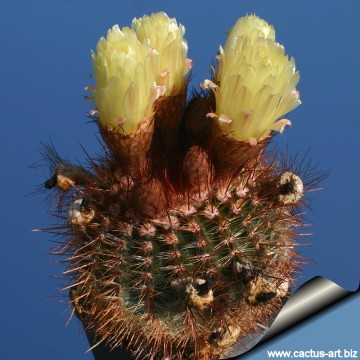 Parodia schlosseri Photo by: Cactus Art
Parodia schlosseri Photo by: Cactus Art Parodia schlosseri Photo by: Cactus Art
Parodia schlosseri Photo by: Cactus ArtSend a photo of this plant.The gallery now contains thousands of pictures, however it is possible to do even more. We are, of course, seeking photos of species not yet shown in the gallery but not only that, we are also looking for better pictures than those already present.
Read More... Cultivation and Propagation: This is an easy plant to cultivate. It can support quite a lot of water during the growing season. It prefers a neutral to slightly acidic mineral-based potting mix with plenty of extra grit and feed during the summer.
Watering Needs: Can support quite some water during the growing season but pot plants in winter are wet-sensitive and needs to be kept dry (rots easily if soil is wet and cold) tends to lose its roots in winter. It rots easily if soil is wet and cold. Water Best if watered with rain water. Relatively cold hardy. Usually it is recommended to over-winter this plant in a bright and warm greenhouse with at least 8-10° C a but it has proved to tolerate temperatures as low as -5° C for short periods. It is susceptible to spider mites, so it should be check once in a while for it.
Sun Exposure: Light shade to full sun, but it doesn't like full, hot blazing sun in the central summer months.
Propagation: Seeds, cuttings or root suckers (if available). Not too difficult to raise from seed.


















